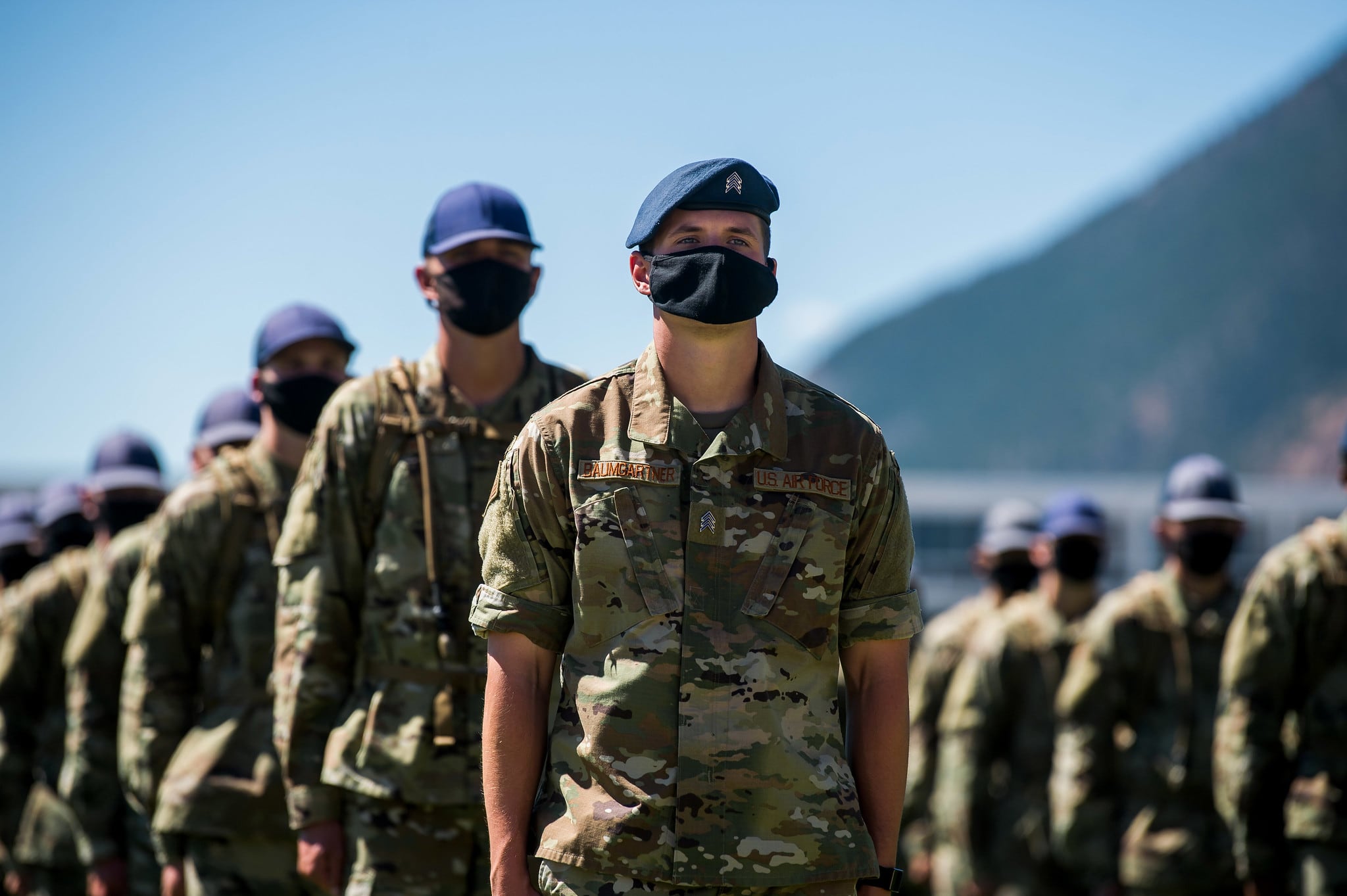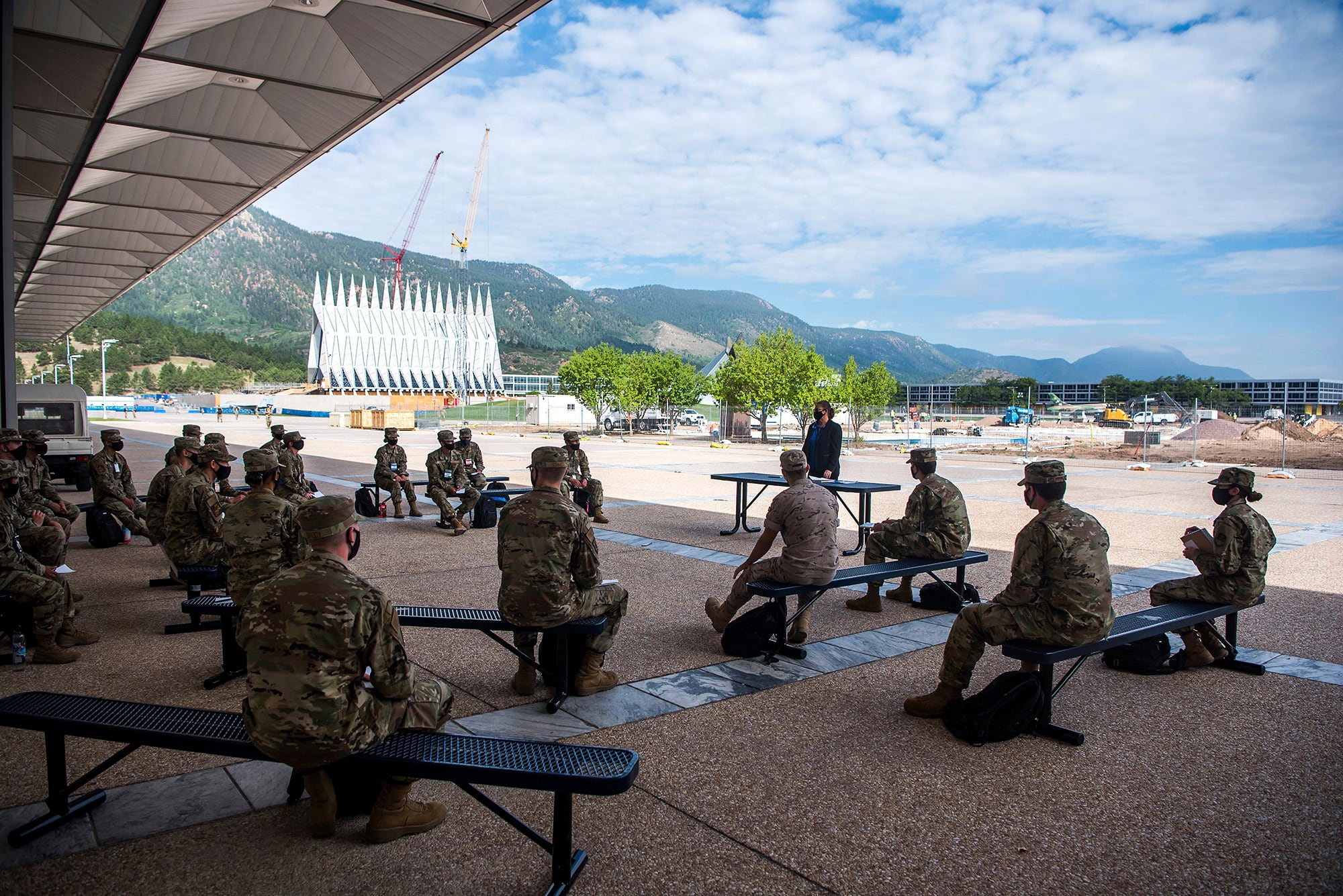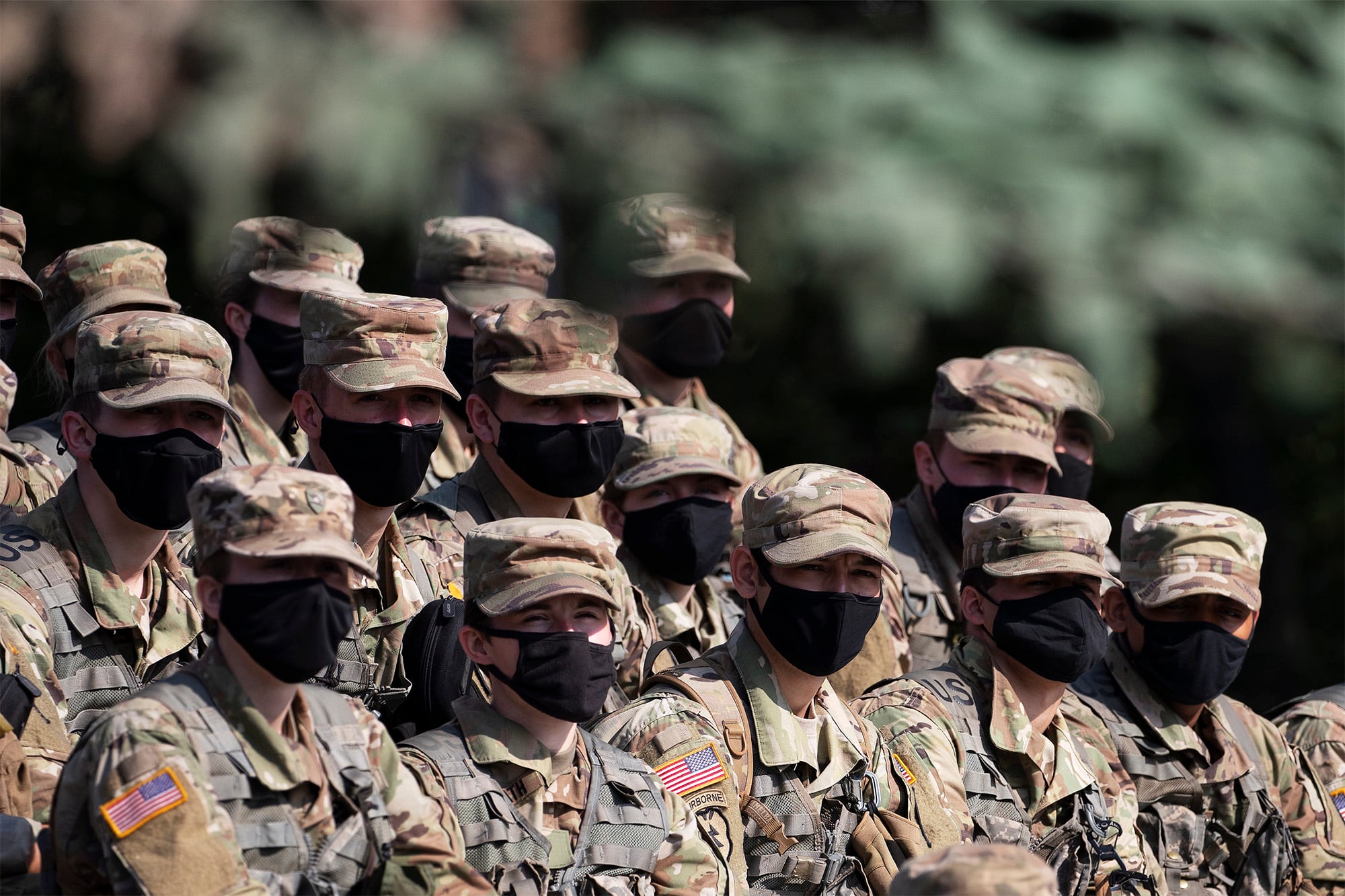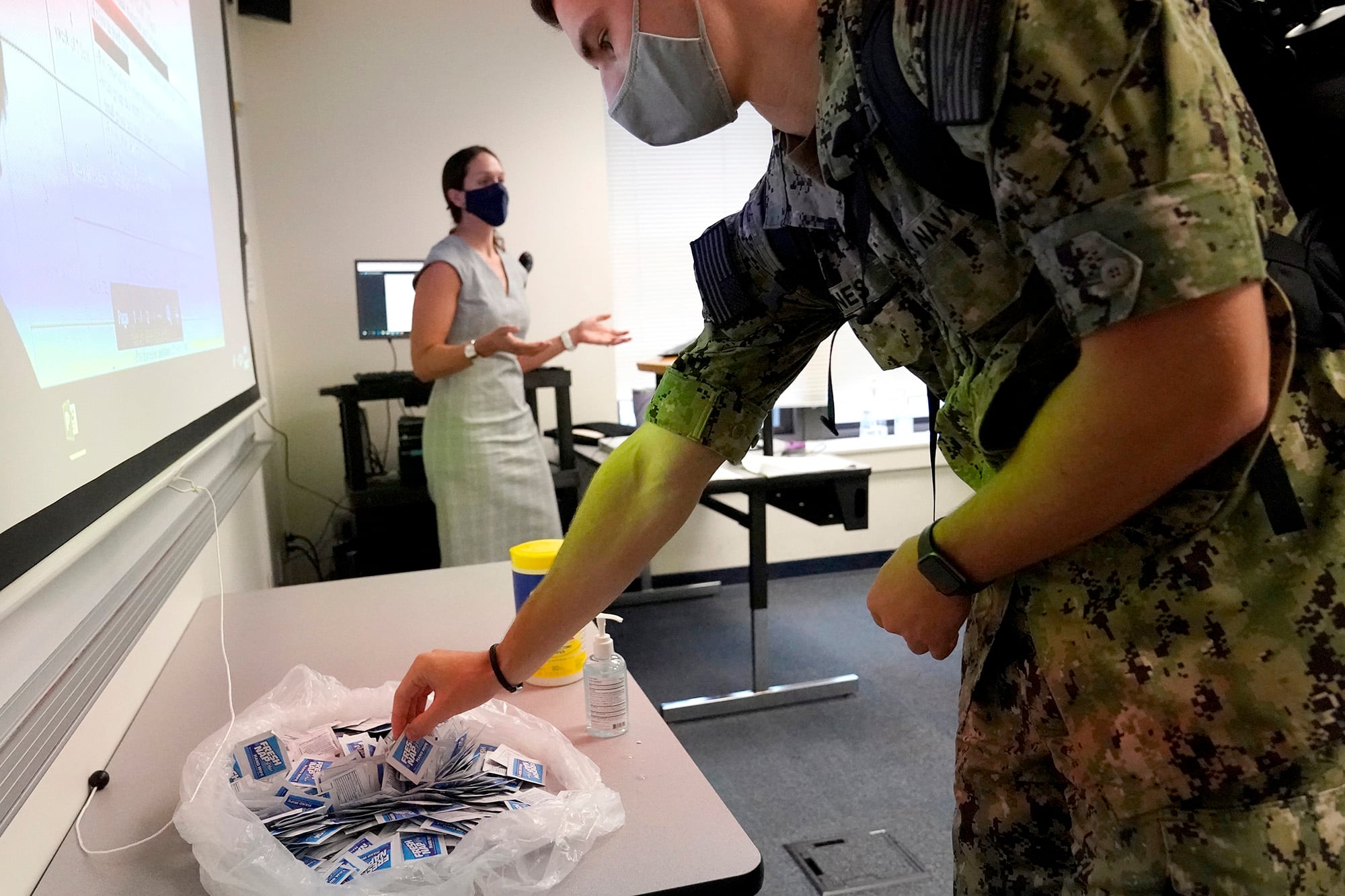ANNAPOLIS, Md. — As eight Navy midshipmen file into their economics class, instructor Kurtis Swope points to the antibacterial wipes on the desk. “Did you grab wipes?” he asks, then tells each one to take two, wipe down the desk when they arrive and again when they leave. “That should be your process.”
As chairman of U.S. Naval Academy’s economics department, Swope broke his class into two sections, so every student could attend in person. Down the hall another instructor, flanked by chemistry equipment, stands in front of two computers teaching in an empty classroom. And another instructor sits in her office, talking to a grid of camo-clad students on her laptop.
Under the siege of the coronavirus pandemic, classes have begun at the Naval Academy, the Air Force Academy and the U.S. Military Academy at West Point. But unlike at many colleges around the country, most students are on campus and many will attend classes in person.
This is largely due to advantages the military schools have. They’re small, each with about 4,500 students who know that joining the military means they’re subject to more control and expected to follow orders. Their military leaders, meanwhile, are treating the virus like an enemy that must be detected, deterred and defeated. They view the students as the next generation of commanders who must learn to lead troops through any crisis, including this one.
“If you look at COVID as a threat, it helps you frame it in a way that I think you can then conduct action against it,” said Brig. Gen. Curtis Buzzard, West Point’s commandant. The cadets, he said, are getting lessons in “leading through uncertainty and adversity. I’ve had to do that throughout my career in the Army, particularly in combat, and they’re getting a little dose of it.”
The virus outbreak sent most academy students home to finish spring semester online. Air Force seniors stayed and graduated early.
Now students have returned, and 1% to 2% tested COVID-19 positive on arrival and went into isolation. Since then, officials say they’ve seen few new cases. The Navy and Air Force will randomly test 15% of students weekly; West Point will test 15% to 20% monthly.
RELATED

Because they need dozens of on-campus rooms to potentially isolate COVID students or quarantine those who come in contact with infected persons, the Navy and Air Force academies are renting space off-site for healthy students. The Navy, in Annapolis, Maryland, is putting 375 students at St. John’s College and the Air Force, in Colorado Springs, Colorado, will put 400 in three local hotels.
“We know that with this population that about 90% of this age group is asymptomatic,” said Brig. Gen. Linell A. Letendre, Air Force Academy dean. “That’s what’s really scary about this disease. How do we find those individuals who have it when they don’t even know they have it.”

To limit any spread, the academies made physical and academic changes. At the Navy’s Michelson Hall, blue tape marks seats that must remain empty, red tape forms large arrows on the floor showing students which way to go, and stairways are designated up or down. Signs remind students about social distancing. Library books borrowed online sit in paper bags for pick-up.
The Navy has the smallest campus, but two large tents were wedged next to the dorm for dining. The Air Force and Army, however, have been able to create large outdoor classrooms and meeting areas.
“I wanted outdoor classrooms for a long time and we’re finally getting them,” said Letendre. “I never waste a good crisis.”
At West Point, instructors tested their classroom air quality. They added time between classes for cleaning. And faculty walk the halls to ensure students follow health procedures.
The Army and Navy academies will limit students’ movements off campus. That may be difficult, since the tourist-filled restaurants and bars of Annapolis’ waterfront are nearby. Air Force leaders said they’ll let students go to stores or take-out restaurants initially, but will clamp down if there are COVID cases.
“I don’t know that anyone else can demand the same things we do with respect to self-discipline. That’s just part of being in an academy,” said Col. Matthew Dabkowski, director of West Point’s systems engineering program. “There’s a level of control with respect to the staff and faculty and the cadets that, I think, is helpful.”

Academy officials said roughly 50% of their classes will be in-person, the rest will be online or a mix. Some students will attend in person more often if they have lab work.
Students attending academies also need hands-on military experience. The virus made some of that impossible this year, and some students missed critical time in military units or on ships.
“You can do academic course work online. We can teach online,” said Andrew Phillips, Naval Academy provost. “But the professional experiences they missed this summer are very hard to make up.”
Phillips said most juniors who must pick their service specialty now didn’t get out to active-duty units but will, he hopes, choose wisely. Navy students heading to the Marine Corps, however, got a shortened summer experience because Marine leaders felt strongly about seeing them in person.
“You want an individual who is a good fit for the Marine Corps, whose attitude is right,” Phillips said. “And you really only can judge that face to face.”

Technology is also a challenge, with thousands online for classes. Many instructors want students to have their cameras on, which requires more bandwidth.
Swope, for example, has one computer set up showing his online students; his iPhone camera faces the class, so they are visible online, and his iPad displays his lessons.
Instructors have to be ready to provide online classes to students in isolation, and also be prepared to teach from home if they’re quarantined. Celeste Luning started her junior leadership class at the Naval Academy seeking volunteers to set up the computers if she’s not there.
“Have you had in-person classes yet?” Luning asks. Amid the chorus of “no,” she turns to her computer to address those online: “Can you see your classmates?”
One voice from the computer sums it up. “It’s pretty weird,” he said.




